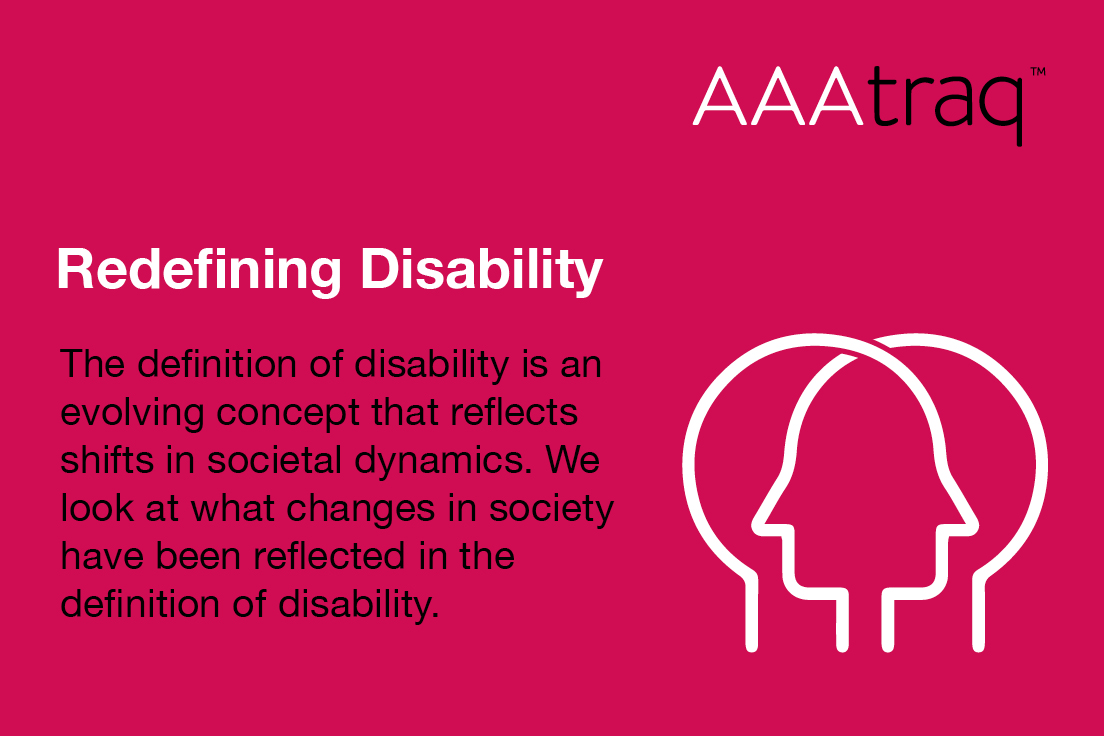Redefining Disability
Feb 08 2022
As mentioned in our previous article (opens in a new window), the growth of disability is a reflection on the historical and continuous redefining of what it means to be disabled.
In context, disability can reflect a variety of definitions, and temporally, has reflected a variety of perspectives on what it means to be disabled. Disability, as defined by many researchers, typically adopts a definition based on the two contemporary dominant perspectives: the medical model and the social model. “The transition from an individual, medical perspective to a structural, social perspective has been described as the shift from a “medical model” to a “social model” in which people are viewed as being disabled by society rather than by their bodies.”1 Such a transition reflects the idea that the definition is there to evolve and reflect the changes in society.
Historical Perspective of Disability
The way in which society reacts and engages with those who have a disability has evolved significantly over time. This historical reference begins in the medieval era and reflects the significance of religious dogma in that era. “In the medieval era, disability was considered a punishment from God for one’s sin or misbehavior or that of one’s ancestors.”2 Such a belief negatively impacted societal views towards those who were disabled, and significantly hindered their ability to be accommodated. Instead, disabled individuals were perceived as pariahs, and often used for political and comedic entertainment (i.e., as court’s jesters). Other times, the disabled individuals were sent to the streets so as not to be financial and emotional burdens to their families and society at large.
While the societal perception of disabled individuals as pariahs continued for centuries, the significance religion played waned over the years. By the early 19th century, society began to adopt a version of the medical model. The medical model says that individuals are disabled because of impairments they hold which make them different from those around them. As such, the responsibility of adapting and finding ways to achieve “normality” is placed onto the disabled individual. Having the disabled individual carry such responsibility proved to be harmful to the disabled population, as the focus was never on what the disabled person needed. While the medical model dominated society, many disabled individuals found themselves being stripped of their independence and forced into institutional care.
The progressive social movements of the early 1900s sparked an invigorated effort by the disabled community to redefine disability in such light that would quash ideas of them being a burden on society. Eventually, albeit over an extended period, the disabled community came together and fought for their own definition of disability. “The medical model and the social model are often presented as dichotomous, but disability should be viewed neither as purely medical nor as purely social: persons with disabilities can often experience problems arising from their health condition.”3 While some sort of balance between the two is today’s norm, the social model is generally preferred by the disabled community. With the social model, the onus of accommodation is transferred onto society at large (government, business, etc.) as they are the ones who have constructed the barriers that disable individuals.
What does this shift mean?
The shift from the medical model to the social model is indicative of a shift in the perception of society in the way they view their role and responsibilities towards their own members. Not only has society undergone a revolution in their understanding of the importance of moral/ethical obligations to each other but have hold individualism with much greater value. As such, the shift from the dominance of one model of disability to the other, suggests that society holds greater acceptance towards disabled people. This acceptance of disability into societal norms and liberalization of society is conducive to more readily accepted aspects of accommodation.
To that end, accommodation and self-identification has become more widespread. Employers, educational institutions, and governments alike have implemented institutional programs/policies to provide accommodations to disabled individuals. While more readily accessible and accepted, accommodations are still not enough. Not everyone is protected, nor is everywhere required to provide accommodations that would sufficiently meet the needs of the person who needs them (i.e., disabled individual). That being said, today’s progress sets the tone for future prospects at better conditions for the disabled in the future.
1 “Chapter 1: Understanding Disability,” in World Report on Disability (Geneva, Switzerland: World Health Organization, 2011), pp. 1-17, 4.
2 Suzanne C. Smeltzer, Bette Mariani, and Colleen Meakim, “Brief Historical View of Disability and Related Legislation©” (Villanova University College of Nursing, 2017)
3 Chapter 1: Understanding Disability,” in World Report on Disability (Geneva, Switzerland: World Health Organization, 2011), pp. 1-17, 4.
Subscribe to AAAtraq and enjoy complete cover and peace of mind
